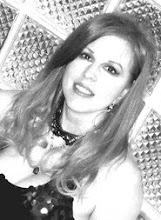They are:
(1) Intelligence
(2) Talent
(3) Cunning
-According to my friend from New York- yet I agree to a certain extent and will elaborate more later about how far I'm willing to go with those three things.
I'm saving the best example for my last example- drum roll please!
Sam Walton
"With the possible exception of Henry Ford, Sam Walton is the entrepreneur of the century."
~~~Tom Peters
co-author of In Search of Excellence
Tom, I have to tell ya- baby, you said it!
Personal feelings, good or bad, about Wal-Mart aside- Sam Walton built the most exquisite business model the world has ever seen. I'm telling you- it's a work of art.
Sam Walton was a natural triple threat in that he was: intelligent, talented and cunning.
Yet he was very intentional about what gave him his edge. That competitive advantage. Know what it was? The real edge? Da big whopper of a principle?
Controlling expenses!
"We had to keep expenses to a minimum. That is where it started years ago. Our money was made by controlling expenses." Sam Walton
What has Entrepreneur Chick been telling you? Keep expenses low.
By keeping expenses low, the natural result of that is two fold. First, by having lower expenses, your profit margins, conversely, will be higher.
Secondly, when times aren't good- and I can promise you, some times are not going to be good, by wisely keeping your expenses low- i.e. operational costs, doing more with less, etc. you can wait out the storm while your more extravagant competitors have taken on debts they really couldn't service, effectively knocking them out of the running.
Sam strongly admonishes: " Control your expenses better than your competition. This is where you can always find the competitive advantage. For twenty-five years running- long before Wal Mart was known as the nation's largest retailer- we ranked number one in our industry for the lowest ratio of expenses to sales. You can make a lot of different mistakes and still recover if you run an efficient operation. Or you can be brilliant and still go out of business if you're too inefficient."
Convergence of Two Important Factors
Another thing Sam did- he could fly an airplane and loved to fly. Why would you say that would matter? You see, back in those days, there were no real replicable systems on a large scale. If you had one discount store, because of technology being what it was- you pretty much had the one store. It was too hard to keep track of all that inventory, all those employees.
So he flew. He flew from remote store to remote store. He had his finger effectively on the pulse of what was really going on.
Now add in the advent of the computer! The guy flew from store to store, making him as fluid as all get out- now you've got computers keeping up with his ever growing, ever expanding, ever improving system- which by this time is an extremely dynamic, living, breathing organism. Who's the Mack Daddy now? Uh huh. That's what I thought.




.jpg)





























I agree with you on this one, but I would like to take it two steps farther. It is about controlling margins and then in turn controlling your operating cash-flow. Have you ever heard the expression "cutting the muscle with the fat"? When times get tough many people cut control their expenses by cutting everything except necessary cost to keep running. The problem is that they are slowly killing the company and hoping that the business environment changes before the disease they caused kills them. You need to control cost, but also grow your margins by growing your sales. In a down environment your sales will be down, but you must strive to increase sales along with controlling cost, so that you stay healthy as a company. Then you need to control your operating cash-flow. You can make a profit, but if you grow to fast then you are putting yourself into a difficult position. You will need to finance the growth and in turn take on unnecessary debt. There is a great financial model I like. It is an old fashion one, but I still believe a great way to look at a business. It is the Dupont model. It states that every move should have an impact on the Return on Equity. It controls growth, cash-flow, margins, debt and a host of other items that are all important. Let me know if you ever wnat to see it. By the way. Great work on what you are bringing to people.
ReplyDeleteYes, I want to see that model! I've heard of it, but only peripherally. You say "Cut the muscle with the fat", I say, "Throw out the baby with the bathwater." Ain't from Oklahoma is ya?
ReplyDeleteAnd thank you very much, Don- for the compliment. Coming from you- it means a lot.